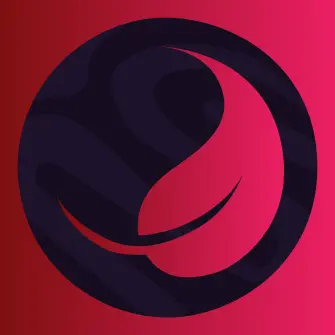Elon:
Guys, I think I’ve got it… What if we built another lane but, you know, under the ground, like a tunnel.
I recently watched a video about autonomous car and the dude argue the tech isn’t here yet, but it will work if we build a lane just for autonomous car and put every autonomous car on that lane.
Everyone in the comment basically calling him out for reinventing the train lol.
deleted by creator
But what about the office landlords, are no one think about how they are going to feed their yatchs?
I once heard of an experiment in economics that offers insight into this.
Say you have 100 people. You give each of them one of two choices:
A : you get $40 unconditionally B: you get $70 - n, where n is the number of people who choose B
You end up getting, on average across experiments, n = 30.
If you move the numbers around (i.e, the $40 and the $70), you keep getting, on average, a number of people choosing B so that B pays out the same as A.
I think the interpretation is that people can be categorized by the amount of risk they’re willing to take. If you make B less risky, you’ll get a new category of people. If you make it more risky, you’ll lose categories.
Applied to traffic, opening up a new lane brings in new categories of people who are willing to risk the traffic.
Or something. Sorry I don’t remember it better and am too lazy to look it up. Pretty pretty cool though.
It’s called “Induced Demand”.
As a road widening project is completed, traffic is alleviated for a short amount of time. Then as time passes word spreads, or more people move to the city, or kids get older and get their driver’s licences. More and more people know this widened road is the fastest route, so more people take it, thus undoing the improvement. Then the cycle starts again - either with the same road being widened again, or another one a block over, on and on until the world is covered in asphalt.
The solution is to make alternative transit more appealing than cars. Bikes and public transit already have significant financial benefits, but lack infrastructure to make it more viable in North America. Busses get stuck in traffic, bikes are forced to share lane space with cars or sidewalks with pedestrians.
How is alternative transit the solution? Cities that have public transportation still have traffic jams.
There was an English traffic engineer that predicted that avg speed in central London will always be like 9mph. No matter how many lanes or public transit options you add. If there is no traffic, people will take cars until traffic jams are unbearable to give up. Then the system finds equilibrium.
The key is public transit that doesn’t suck. For the last 100 years the car and oil/gas industries have spent billions of dollars undermining public transit.
Dedicated transit lanes, subways, light rail, protected bike lanes all make cars less appealing to those that want to use them.
Yeah, one of the best examples of this is the Vienna public transit network. About 1000 vehicles (bus, tram, light rail, subway) in service at rush hour, a daily total distance of over 200000km traveled, more year-long ticket owners than car owners in the city, and about 2 million “travels” per day, which is about 30% of all traveling done over the city (including pedestrian and bike traffic)
If that traffic would be routed only by car, the city would be a giant parking space; to compare, one subway train carries about 900 people in rush hour, which replaces 790 cars (avg 1,14 persons per car here). the subway interval in the rush hour is about 4 minutes. i live at one of the subway final destinations, which is on one of the far ends of the city - and i can be at the other side of town in about 25 minutes.
And constructing and running a public transit network is a pretty nice boost to the local economy, creates a whole lot of jobs. sounds like something a lot of us cities could make use of.
Mixed traffic works here, it allows mobility for all social classes (yearlong tickets cost 365€, so about 400$ incl. taxes), nearly all stations are barrier free.
The key is that both adding car lanes and adding alternatives like transit are subject to induced demand, but the consequences of it are different for transit than for cars. Not only is the limit of the added capacity much, much higher for a train than it is for a car lane, adding more traffic to the lane up to that limit makes the performance worse and worse (increasing congestion), while adding more transit ridership up to its limit makes the performance better and better (increasing train frequency and therefore reducing wait times).
Similarly, induced demand for walking and biking is a good thing because more people doing those things improves public health, doesn’t pollute like cars do, and takes up much less space.
So it’s not that induced demand is bad, it’s that inducing demand for cars, specifically is bad.
If you make B less risky, you’ll get a new category of people. If you make it more risky, you’ll lose categories.
Can you explain what this part means? What do you mean by category here?
Yes. That wasn’t the best word choice; maybe “group” would have been better. I meant groups of people who are willing to take some level of risk. Imagine the categories are “low risk takers”, “medium risk takers”, and “high risk takers”.
Compared to A paying out $40, if you make B $50-n you’ll only get the high risk takers choosing B. If you make it $70-n you’ll get high and medium risk takers. If you make it $120-n you’ll get almost everybody.
If risk taking is a value between 0 and 1, the categories are groups of people inside certain intervals. For example, low could be [0, 1/3), medium could be [1/3, 2/3), and high could be [2/3, 1].
Just going to leave this one here:

I don’t really like including pedestrians in there. Like sure, you can fit a bunch of people in a small area, but another point you shouldn’t ignore is the throughput over time, and pedestrians are by their nature rather slow. Obviously if you’re looking at shopping in a street lined by shops left and right, then that street becomes tailor-made for pedestrian traffic (and nothing else except perhaps bicycles). But public transport is much better suited for travelling any further distances, and that should be the main focus when deciding to ditch cars.
Sure! Both speed and distance matters a lot for throughput. The advantage of pedestrian traffic is that designing for it reduces the distance people have to travel and that it combines very well in conjunction with public transport, unlike cars. Also, the speed of mixed traffic is inverse correlated to the number of vehicles, hence is a special case in this regard where throughput may decrease as the volume per lane increases. The overall point however is that a single train can substitute a staggering amount of private vehicles (and who doesn’t love leaning back, listening to music and reading the news while commuting?).
That’s why pedestrians are in there
Passenger per hour going where? If everyone is going from A to B, ok. But people need to go allover the place.
For me a 10min car ride is a 1.15h bus ride…
If cars were banned then the bus lines would be a lot better to compensate
But maybe you take a 10 minute train followed by a 5 minute bus in the utopia example
Well, no one is saying cars are worse for all purposes. If you want to take your family and dogs to a cabin in the mountains while also shopping for food along the way, it is probably going to be your best bet. Still, that is not what is pictured in the post. These are commuters that are probably moving from work to home (or vice versa), where cars really are the worst of most options. If the bus takes longer, it is probably an issue of allocation of funds for a shorter route and exclusive lanes for it.
Think of it like trickle down economics. If it hasn’t worked yet, you just need to make sure that the fat cats on top are fed so forcefully and so fast that something starts trickling down eventually.
Just keep going. We will tell you when to stop.
omg poland 🇲🇨🇲🇨🇲🇨🇲🇨
One more train* will fix it
Going from where to where?
The midnight train goes anywhere I hear.
deleted by creator
Um acttschually, we knew about induced demand as early as 1920, but the government just doesn’t care about science. (It used to be called traffic generation)
In a place with essentially nothing but narrow two lane roads, no bike lanes or sidewalks, a little wider might serve some good. Adding a turn lane and a bike lane would free up tons of traffic.
If the highway increases in size, then more off ramps or more lanes in the off ramps are needed, which in turn need more lanes on the main street that connect to the off ramps. It’s basic filtration system dynamics.
I’m not talking about highways, I’m taking about roads connecting suburbs etc. The only way I can get to work. They’re terrible and only accessible to cars.
The other point to make here is, obviously you look at this highway trip and say “Well I am obviously not walking or biking it.” But, the expansive gaps between home and destination are often caused by many many roads and parking lots like this one. We have dedicated gigantic land masses specifically to cars, and it actually lengthens travel time to our destinations.
I have been to countries where, even if thin highways exist, they’re not the rule and it’s easy for other modes to get under or around them; and their roads don’t dominate the urban areas. There, the answer is simple: Just walk, you don’t even need a bike.
Any city’s skylines players know what actually would fix this problem?
Buses and trains. That, or spaghetti interchange that are bigger than the rest of the city. Also, replace key arterial roads with a pedestrian path, call that path a park, and charge $20 for entry. That will easily fund all the city services and nobody will be too inconvenienced by having to pocket their car as they walk across the “park” to get between neighborhoods. Now excuse me, I have to go murder a little blue bird that won’t shut up about the garbage piling up
Viable alternatives to driving
Delete the save and start again
One long meandering 6 lane road that makes up the entire city. I’m not even kidding, that’s pretty much the optimal solution in the game.
Caesar was like that, too. Citizens couldn’t pathfind if their life depended on it, and it sometimes did.
The approach worked as intended, more perfectly even.
Look at all those useless expenses on the pic, some people profited on products that weren’t necessary to begin with, and put a lot of moneys in so the system wouldn’t accidentally change for the better.
No! Don’t stop now! We are so close!
I’ve seen that exact scene in Atlanta trying to get to Alpharetta from 75 S by 675.
Alpharetta represent! Lol











